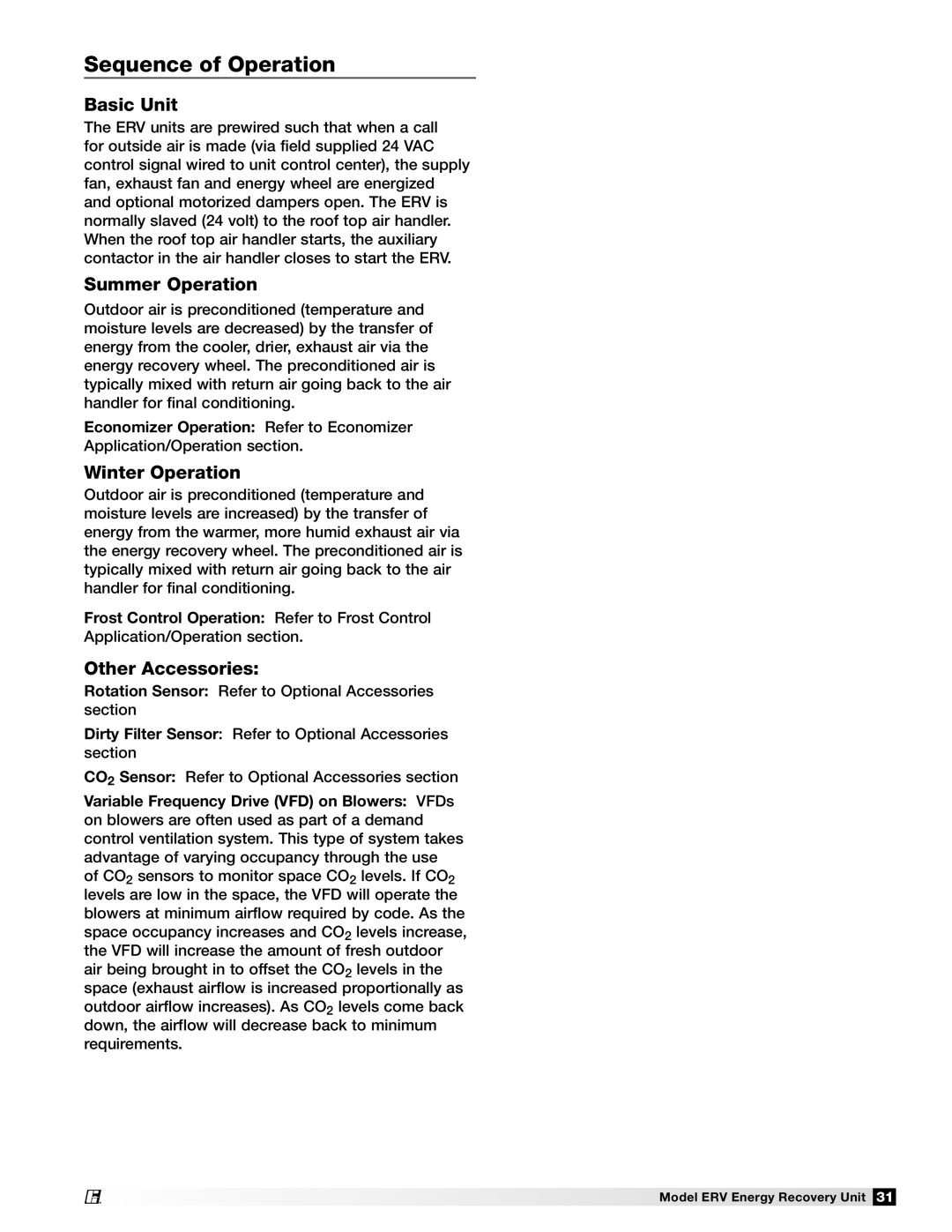ERV-361, ERV-251, ERV-521, ERV-582, ERV-522 specifications
Greenheck Fan has established itself as a leader in the design and manufacturing of high-performance ventilation systems, including its innovative energy recovery ventilators (ERVs). Among their popular models are the ERV-581, ERV-522, ERV-582, ERV-521, and ERV-251, each designed to enhance indoor air quality while optimizing energy efficiency.The ERV-581 offers comprehensive ventilation solutions for commercial buildings, equipped with advanced heat recovery technology. This model features a robust, compact design, allowing for easy installation in limited spaces. Its efficient energy recovery capabilities transfer heat and moisture between incoming and outgoing airstreams, leading to significant reductions in heating and cooling costs. The ERV-581 also includes a user-friendly control panel for simplified operation.
Next in line, the ERV-522 is engineered for larger spaces, balancing higher airflow rates with enhanced energy recovery performance. This model is particularly beneficial for schools and office buildings, where maintaining fresh air quality is paramount. The ERV-522 employs a two-stage filtration system, ensuring that airborne pollutants are effectively captured before being circulated back into the environment. Its resilient construction further ensures longevity and durability in demanding applications.
The ERV-582 enhances the lineup with its dual-function capability, serving both as an energy recovery ventilator and a dehumidification system. This flexibility makes it an ideal choice for climates with high humidity levels, where moisture control is essential. The ERV-582 incorporates Greenheck’s patented technology for optimal performance under varying temperature and humidity conditions, making it a versatile solution for diverse environments.
The ERV-521 stands out with its eco-friendly design, featuring recyclable components that align with sustainable building practices. This model is particularly favored in LEED-certified projects, where energy efficiency and minimal environmental impact are essential. The ERV-521 also includes an intelligent control system that adjusts airflow rates based on occupancy levels, ensuring optimal energy usage.
Finally, the ERV-251 is a compact, energy-efficient model suited for residential installations. It is designed to fit seamlessly into homes, providing essential ventilation while reducing energy consumption. The user-friendly interface allows homeowners to monitor and adjust settings easily, making the ERV-251 a popular choice for those looking to improve indoor air quality without compromising on comfort.
Together, these Greenheck ERV models exemplify cutting-edge technologies and engineering, paving the way for healthier indoor environments while promoting energy conservation. Each unit is tailored to meet specific application needs, making them invaluable assets for any ventilation strategy.

